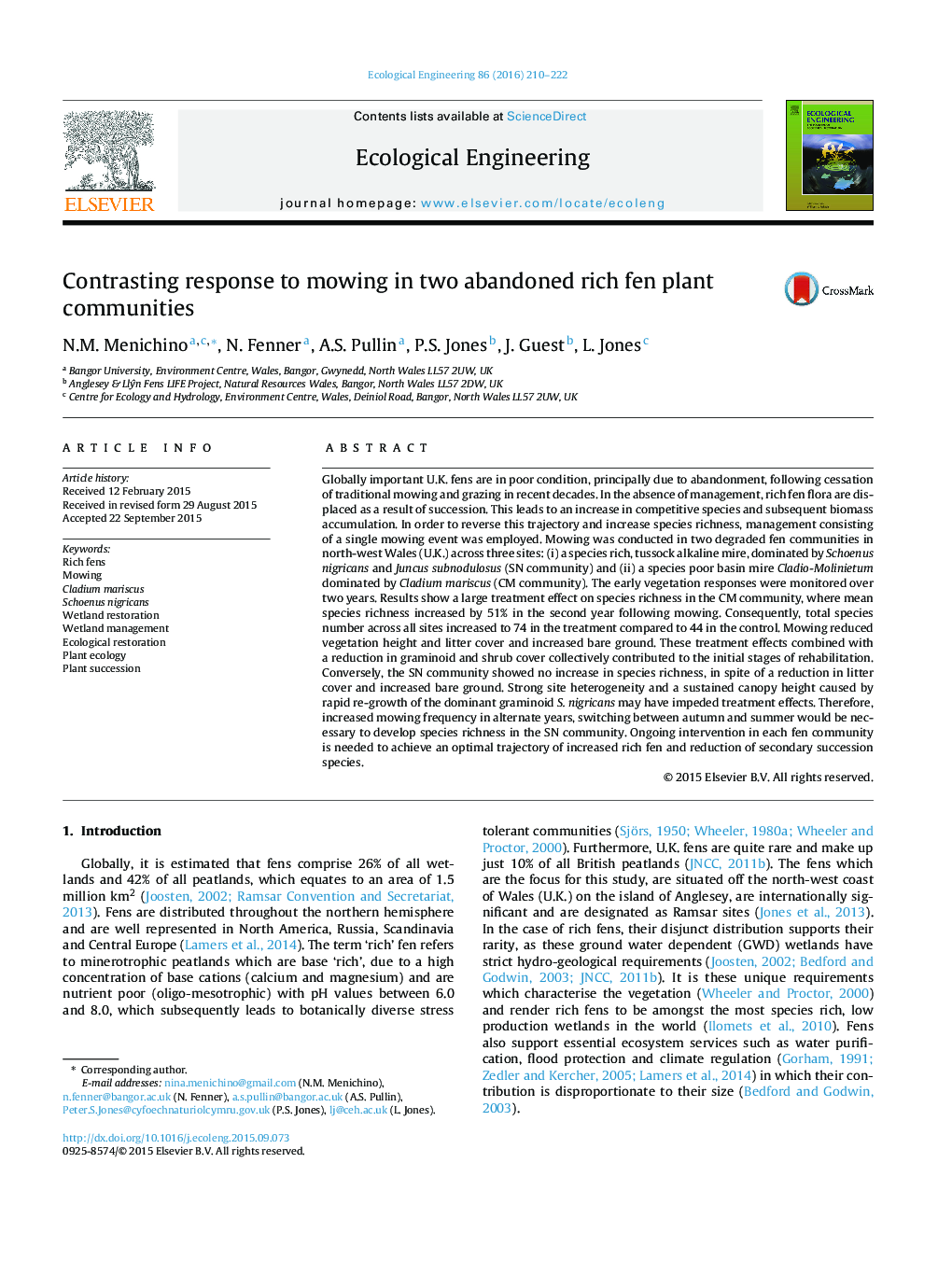| کد مقاله | کد نشریه | سال انتشار | مقاله انگلیسی | نسخه تمام متن |
|---|---|---|---|---|
| 4388932 | 1618013 | 2016 | 13 صفحه PDF | دانلود رایگان |
Globally important U.K. fens are in poor condition, principally due to abandonment, following cessation of traditional mowing and grazing in recent decades. In the absence of management, rich fen flora are displaced as a result of succession. This leads to an increase in competitive species and subsequent biomass accumulation. In order to reverse this trajectory and increase species richness, management consisting of a single mowing event was employed. Mowing was conducted in two degraded fen communities in north-west Wales (U.K.) across three sites: (i) a species rich, tussock alkaline mire, dominated by Schoenus nigricans and Juncus subnodulosus (SN community) and (ii) a species poor basin mire Cladio-Molinietum dominated by Cladium mariscus (CM community). The early vegetation responses were monitored over two years. Results show a large treatment effect on species richness in the CM community, where mean species richness increased by 51% in the second year following mowing. Consequently, total species number across all sites increased to 74 in the treatment compared to 44 in the control. Mowing reduced vegetation height and litter cover and increased bare ground. These treatment effects combined with a reduction in graminoid and shrub cover collectively contributed to the initial stages of rehabilitation. Conversely, the SN community showed no increase in species richness, in spite of a reduction in litter cover and increased bare ground. Strong site heterogeneity and a sustained canopy height caused by rapid re-growth of the dominant graminoid S. nigricans may have impeded treatment effects. Therefore, increased mowing frequency in alternate years, switching between autumn and summer would be necessary to develop species richness in the SN community. Ongoing intervention in each fen community is needed to achieve an optimal trajectory of increased rich fen and reduction of secondary succession species.
Journal: Ecological Engineering - Volume 86, January 2016, Pages 210–222
